PARMA, this is it
- Raffaella Cattelani

- May 4, 2023
- 13 min read
Updated: Dec 29, 2024
Do you want to experience Parma like a local? Then check out 10 tips to get the best out of the city

It is not enough to say that you are from Parma, because Parma and its province are not only a physical place to stay, but they are above all a way of understanding life: this land is a set of many things, even very different from one another. 'other. Often, however, so many things together mean so many contradictions that do not merge at all ... but which surprisingly can coexist here.
Let's give some examples:
There are snowy and freezing continental winters interspersed with summer seasons characterized by a sultry heat of an almost tropical type;
The sea breezes descending through the Apennine pass allow the curing of an inimitable salami such as Prosciutto, yet it is also true that the late autumn mists descending along the banks of the Po river allow the curing of a product such as Culatello that offers truly unique taste experiences;
Parma is undoubtedly a city with an immense artistic and cultural heritage, but there are also industrial districts, especially in the food sector (the Food Valley) that compete with the most powerful giants in the world, and our territory has become the symbol of food excellence, well known and appreciated all over the world.
Nowhere else in the world is there so much talk of food: here is a topic that is also discussed, as is the stuffing of anolini ... and here woe to call them tortellini!
People need to think about what they eat because in this land everything, even the most basic thing like food (and even pork...) becomes a philosophy. It is a philosophy, however, that does not remain an unlikely idea for a few intellectuals: here the most important thing is what you eat. If in every place in the world intellectuals meet and converse in literary salons or academies, the Parma people preferably do so "with their legs under the table", because they are people who cannot live without food or without discussing food ...

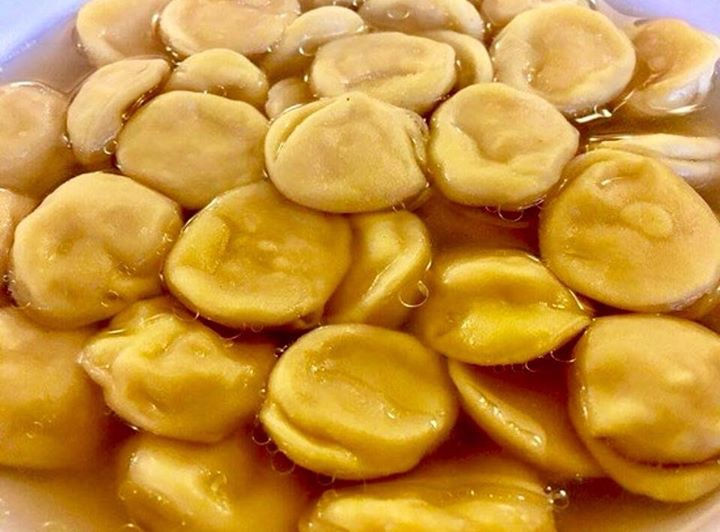
1. THE FLOATS (that is, the ANOLINI IN BROTH)
Just talking about it makes your mouth water: anolini has always been one of the typical dishes of Parma and its province, and is a must in family reunions, especially during the two main religious celebrations: Christmas and Easter.
This typical stuffed pasta takes different names according to the various neighboring provinces: only in Parma it is called anolini, while the cappelletti are from Reggio Emilia, and the tortellini are typical from Bologna.
The floats, according to Parma jargon, are served in a hot capon broth which is even better if you see "eyes emerge" (that is, if you see grease spots appearing). While anolini float in the steaming broth, they may all look the same, but they are not at all. Every family, like every restaurant, has its own version: there are those who put nutmeg and those who prefer to avoid it; there are those who put only the capon in the broth, and those who prefer the hen, or those who cannot do without the broth obtained by cooking three types of meat together! ... However, the most relevant difference lies in the preparation of the anolini filling:
a) The filling is made with the sauce of a beef stew cooked for several hours;
b) The filling is "lean", that is, made only with Parmigiano cheese, breadcrumbs and eggs, without the meat stew.
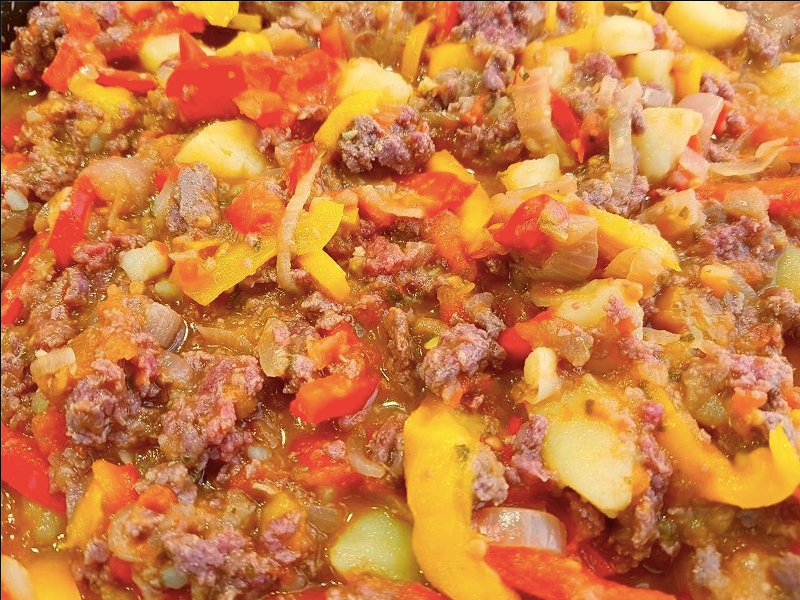
2. HOW TO COOK THE VECCHIA (literally means the OLD LADY)
Don't worry, "how to cook the old lady" does not mean a manual of easy tips on how to get rid of a lady who is no longer young and maybe even a little nasty! ...
The vecchia (so called perhaps because the recipe is lost in ancient times) is a dish that has always filled our tables with its scent.
We start from a large pan in which oil and butter are heated, and add a mixture of garlic, onion, celery, parsley and a mixture of sliced vegetables: onion, ripe tomatoes, green peppers, potatoes. Sauté a few minutes, then lower the heat and continue to cook slowly, adding a little broth if necessary. If you stop here, the vecchia is a good side dish. Instead, it becomes a complete dish if you have a cold boiled meat (perhaps the leftovers of a previously cooked boiled meat) which, when cut into slices, is added to the vegetables. But nothing is worth more than the final addition of fried potatoes previously made crunchy by frying in lard (... today oil is used!): These potatoes added two minutes before serving turn the vecchia into a marvel.
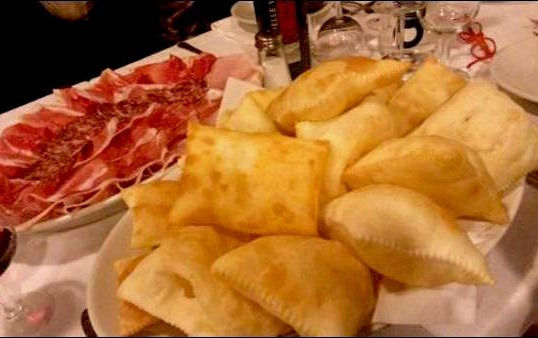
3. TORTA FRITTA (literally means FRIED PIE)
Anyone who hears the term fried pie may suppose it is some kind of sweet treat. Instead, it is a simple and tasty savory food that is the Parmesan version of a dough made with lard, flour and water, pulled into strips, cut into rhombuses, then fried in boiling oil (once it was a must to use lard). The pieces are thus transformed into puffy air cushions, a joy for the palate of children and adults, with their texture soft inside and crunchy outside, so much so that the surface crust must flake. It is essentially a street food in the Parmesan version, so much so that the torta fritta cannot be missing in any country festival.
So why is it called torta fritta? The term, according to some sources, dates back to the Middle Ages, when for the first time the so-called "wind fritters" and "fried clouds" were described which were served hot and sprinkled with sugar at the end of the meal as a dessert: hence the origin of the definition of pie. Over time, however, it was discovered that these pieces of puff pastry could also be tasted without sugar and that, in fact, their greatest exaltation was the combination with local products, in particular local cured meats such as ham, salami or bacon (not Culatello, a sublime butchery product that should be eaten simply accompanied by bread, even the classic Parmesan micca bread).
Although it may seem like a trivial recipe, in reality it is not so true: in fact, a perfect balance must be achieved between the composition of the pasta, its thickness and the temperature of the lard during frying. For this reason, the best recipe for torta fritta is always the one handed down from generation to generation in every Parma's family, of which moms or grandmas jealously keep the secret.
With some small variations in the recipe of the dough, this delicious food is widespread throughout the lower Emilian plain and known by other names: in Modena and Reggio Emilia it is the gnocco fritto, in Bologna the crescentina, in Ferrara the pinzino, in Piacenza the chisulén.

4. ST. HILARY 'S SHOE-SHAPED COOKIES
These are glazed biscuits prepared exclusively on the occasion of the feast of St. Hilary, the holy patron of the city of Parma, on January 13. So, in January, in Parma's patisseries and bakeries there is never a lack of this type of shoe-shaped glazed biscuits, so loved by the Parma people and ideal to accompany hot tea or coffee but also a glass of fresh Malvasia wine.
The figure who inspired these shoes shaped cookies really existed: it is the bishop Hilary born in Poitiers on 315 AD. into a wealthy non-Christian family, who had a solid literary and philosophical education and only converted to Christianity at the age of thirty.
In Parma bishop Hilary stopped off on one of his many trips: a legend tells that he wore a pair of particularly worn shoes. Then a shoemaker, moved by pity seeing the conditions of that unknown pilgrim, made him a pair of new shoes. The next day, in the same place where the old and worn shoes had been left, the man found two golden shoes.
On January 13, 367 AD., a supernatural phenomenon would have occurred which probably gave rise to the myth of this Saint: the legend tells that on the day of the passing of bishop Hilary, an incredibly bright light permeated the dying bishop's room for a long time.
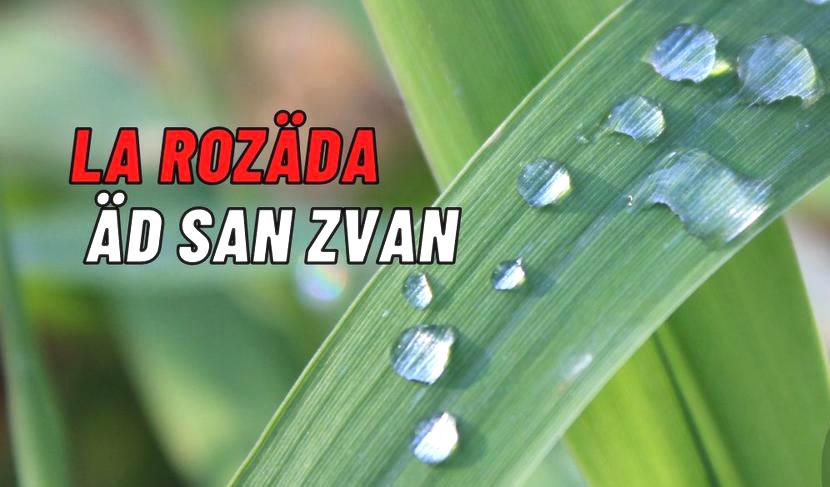
5. THE ST. JOHN'S DEW
On the night of June 23rd in Parma and its province the rite of celebrating the St. John's feast and the summer solstice is renewed with strictly outdoor dinners. Any local restaurant or tavern, but also small groups of friends and single families, take this pretext to spend time together but also to receive the beneficial effects of the St. John's dew.

The obligatory menu for these dinners is based on tortelli d'erbetta accompanied by local wines such as Lambrusco or Malvasia served cold. Tortelli d'erbetta are a stuffed pasta similar to ravioli made with a mixture of green chard, ricotta, eggs and Parmigiano cheese. According to the Parmesan tradition, once cooked in salted water, the tortelli d'erbetta are served "drowned in butter and dried with cheese".
As mentioned above, the dew of St. John's night is considered beneficial and miraculous. This ancient belief is linked to the recurrence of the summer solstice and is a mixture of pagan and Christian rites: tortelli + dew therefore constitutes an ancient inseparable union. For this reason, according to tradition, one must stay outdoors until after midnight, precisely to be flooded by the magical and beneficial dew which is considered both a prodigious balm to ward off ailments of the body and an excellent love potion.
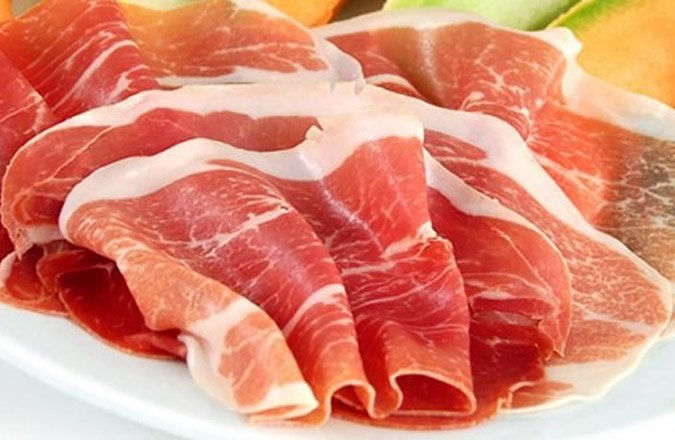
6. CULATELLO: A ROYAL B SIDE
Culatello is certainly a less well-known cured meat than the very famous Parma Ham, but among all the delights of Parma's pork-butchery art, there is no doubt that it holds the palm of primacy for rarity and delicacy. The secret of this gastronomic excellence would be contained in the production area, a handful of municipalities located along the right bank of the Po river, where the long aging in the cellar is favored by that particular microclimate that goes from light mists to dense autumn fogs, and from intense cold in winter, up to hot and humid in summer.
Culatello derives its name from the part used in its preparation (the breech), that is, the muscular part of the rear thigh of the pig from which the bone and rind are removed which, instead, are preserved in the preparation of the ham. The production process of this royal Culatello has not changed since the Middle Ages, so it does not require the use of modern techniques and machinery, but only requires the skilled gestures of the hands of the butcher, handed down over the centuries.
Even when you eat it, a preparation ritual is required which, if performed with the necessary abundance, helps to increase the aroma and fragrance.
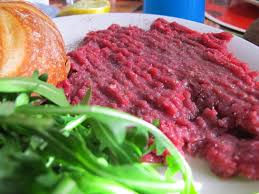
7. GROUND HORSE MEAT: THERE ARE THOSE WHO LIKE IT ROW ...
Ground horse meat is one of the most typical foods of traditional Parmesan cuisine, in the past quite snubbed by the upper classes, but more appreciated by common people. This type of meat is a food that in the eyes of a foreigner can be downright abominable. It is, in fact, horse meat - which in this area is also considered a companion animal! - chopped, eaten raw and seasoned only with oil and lemon (some prefer it slightly spiced and seasoned with a little garlic, pepper and parsley).
In Parma the first horse butchery was opened in 1881, despite the consumption having been authorized by the Municipality as early as 1873. Its location is still clearly visible wandering through the Ducal Park, along Strada Farnese, where you can see a door surmounted by the sculpture of a horse's head. The activity has recently been resumed after long years of closure and, as tradition dictates, the position of the equine butchery is marked by two light white sheets that swing moved by the air at the sides of the entrance.
Even today, especially on Wednesdays and Saturdays when the local market is in the downtown, in front of the horse butcheries you can see long lines of Parmigiani waiting to buy their portion of ground horse meat.
Ground horse meat is a dish that does not require a real preparation. It is enough to remove it from the fridge a few minutes before consumption, place it on a bowl, mash it with a fork, and season it with oil, salt, lemon and pepper. Taste and mash again to incorporate the toppings. You can add some capers according to your tastes.
Ground horse meat is excellent to be eaten raw and accompanied by vegetables or pickles, orin a street food version as a filling for delicious sandwiches so appreciated by the young people of Parma. Famous are the sandwiches prepared by some historic delicatessens in the city which for generations have been traditional places of meetings, friendship and memories, perhaps simply resting on the counter, if not even leaning against the wall on the sidewalk!

8. VIOLETTA DI PARMA: A STORY BECAME A LEGEND
This tiny and ethereal flower (his scientific name is Viola odorata pallida plena), is a symbol of kindness and affection, but also capable of conveying enigmatic political messages. It is inextricably linked to the name of Parma since the time of Maria Luigia of Austria, second wife of French Emperor Napoleon Bonaparte. And the story of the Violetta just began with Napoleon: bunches of violets pinned on the chest were used by the Bonapartists as a distinctive sign during the years of the emperor's first exile when he was by now in sharp decline.
The Duchess of Parma who was a great lover of flowers in general and now far from her consort Napoleon, deprived the Violetta of any political meaning and took it as a symbol of purity and humility, using it both as a decoration of her ducal residence and in the form of a scented fragrance. Indeed, as soon as the Duchess Maria Luigia arrived in Parma she personally took care of the cultivation of this particular flower, and she also wanted the court uniforms, the decorations of her home, and the symbols of the Duchy to be of the same color as the Violetta. Finally, it was just the Duchess who encouraged and supported the research of the Franciscan friars of the Holy Annunciation monastery in Parma, who after a long and patient alchemical work obtained from the Viola odorata pallida plena a perfumed essence exactly the same as that of the flower. The alchemical formula for the preparation of this precious essence was secreted by the monks until 1870, when they revealed it to a farsighted local entrepreneur: Mr. Ludovico Borsari. He was the first to have the courageous idea of attempting a production for a wider market: this is how the Violetta di Parma perfume was born and the initiative transformed the Borsari company into the first major Italian perfumery industry known all over the world.
Maria Luigia was able to deserve the affection, sympathy and trust of the Parma people by governing in peace and prosperity: so, in memory of the much loved Duchess, every year a group of citizens of Parma goes to the Capuchin church in Vienna to lay down on her tomb a bunch of Violetta di Parma.

9. L'ANGIOL D'OR (the GOLDEN ANGEL)
The work is made of beaten plates of gilded copper and was built in 1293 on the occasion of the inauguration of the spire of the bell tower of the Cathedral.
Anyone looking up from the square when the weather is good can see the Golden Angel shining in the sun. The Golden Angel is also mounted on a rotating pin that allows it to turn on itself according to the direction of the wind. Thus, from time to time, it may happen that, looking upwards, one wonders why the Golden Angel turns his back on the square, as if he were offended! ...
Parmesan people who are used to this constant presence that from the top of the spire seems to observe the comings and goings of people in the cathedral square below, know him simply as the Little Angel. Indeed, the features of the statue are those of the Archangel Raphael, that is, the Holy Protector of sick and blind people, travelers and newlyweds.
Over the centuries, this reassuring winged creature has become the symbol of the city, a sort of guardian, a tutelary deity who with his right hand supports the shaft of a cross, while with the other he holds a flap of his cloak. And, over the centuries, the Golden Angel seems to have really watched over the city almost as if he perceived joys and pains, miseries and riches, proclamations and gossip, screams and whispers, words of love or screams of hatred and struggle.
n the mid-forties of the last century the original sculpture was the subject of a careful conservative restoration. On that occasion it was also decided to model a copy of the original Golden Angel , and it is precisely that copy that since 1962 still stands on the bell tower of the Cathedral, while the original sculpture is currently exhibited in the Diocesan Museum located right on the corner with Cathedral Square.

10. THE DOVECOTE, WHERE THE TENER-KILLERS ROAR ...
The Regio Theater gallery (commonly called the dovecote, as it is the last row of cabins) is a small and at the same time huge planet, populated by various humanity that testifies how the Opera can put its fans (true music addicted) on the same level professionals, blue-collars, artisans, students, young or old people, men and women, religious people or atheists, and so on: All these people are perched in these narrow dovecotes in a devoted and attentive listening to music and songs that they know by heart. Even in the other Italian theaters the gallery-goers represents a ver particular and important planet, but at the Regio Theater in Parma they truly becomes a dreaded lion's den for any tenor, soprano or baritone who ventures into this temple of melodrama.
In an almost deadly silence, and in an almost mystical attitude (with ears more sophisticated than NASA radars!) the gallery-goers stand while they listen, have fun, suffer, rejoice, clap their hands or disagree (sometimes grumbling or even whistling) from the first to the last note of an opera. And this is because one does not become a gallery-goer by chance, but one is born with that particular love for the work, perhaps inherited from a relative.
The fact is that the characters who populate the stands, expressing themselves in Parmesan jargon as the official language - perhaps even enriched by extraordinary jokes - represent the inner soul of the Teatro Regio. Among these authentic characters who seem straight out of a Federico Fellini film: extravagant, anomalous, fascinating and unique in their way of experiencing melodrama.
Obviously, this picturesque aspect of the Parmesan people has also changed over time, but even today we are proud of our gallery owners because they are men and women who listen to the representation of a work in religious silence without showing off jewels and luxurious clothes: in short, they are only true connoisseurs of opera singing and melodrama. And if by chance some musical notes come out of the orchestra a little out of tune or if some vocalization seems to 'fade' in the singer's mouth, they realize it and suffer from it intimately, because they really love music, and for this they deserve respect.




Comments